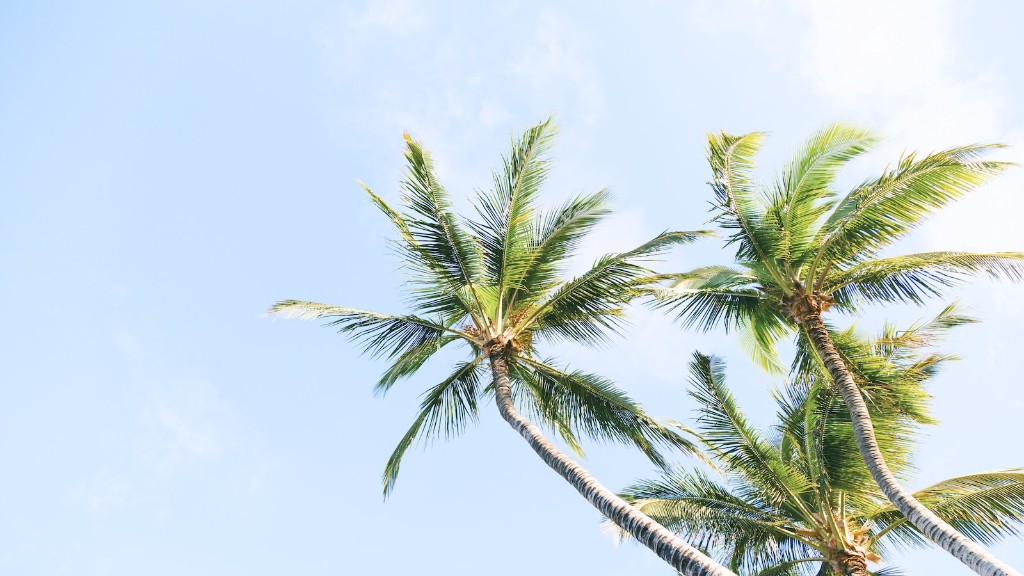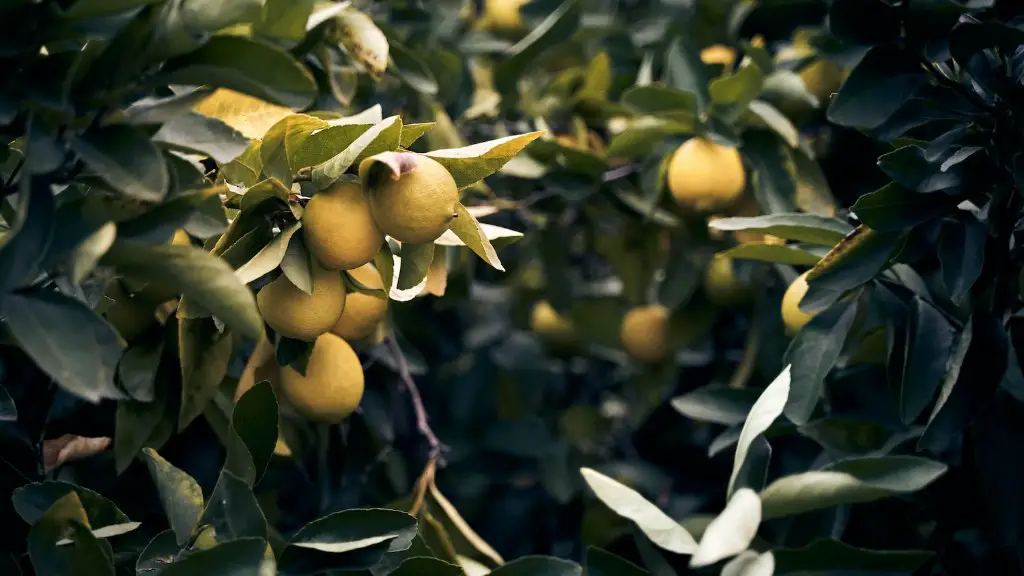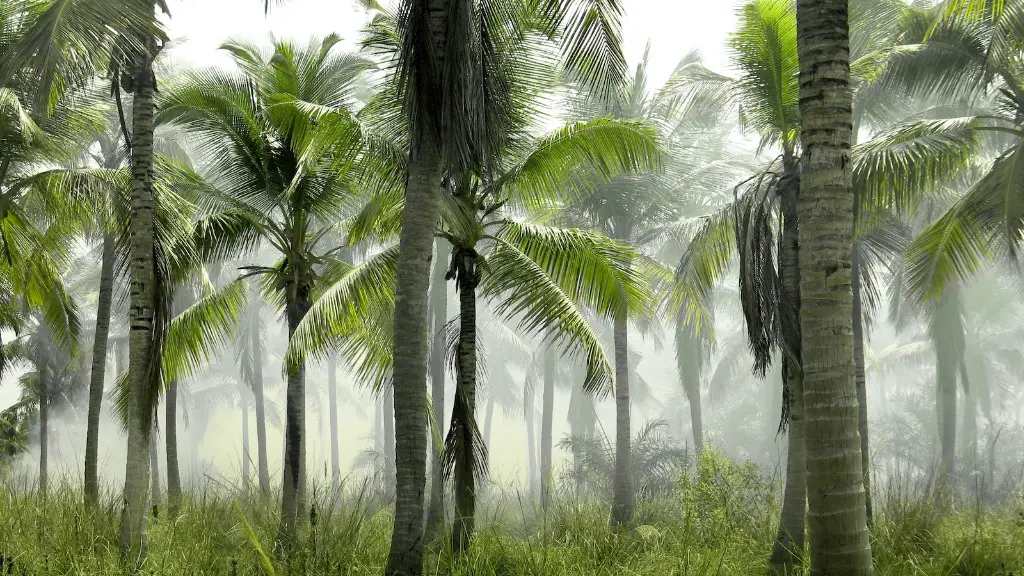Temperature Needs of Hass Avocados
Hass avocados are a popular variety of avocado occurring naturally in California, USA, and a number of other countries. They require special care and attention to ensure that they properly thrive. One of the most important considerations when it comes to caring for a Hass avocado tree is understanding the temperature requirements. Knowing how cold a tree can tolerate can help prevent problems and ensure that your tree will produce the right fruit.
Hass avocado trees are adapted to areas with mild climates, 6 to 12 degrees Celsius is a suitable temperature range for them. A temperature lower than this can cause the flowers to drop and the trees to become hibernating; below 4 degrees Celsius, the plants can suffer serious problems of frost or cold damage. The extreme minimum temperature that a Hass avocado tree can tolerate is -3 degrees Celsius, so temperatures in this range may cause a tree’s death.
In terms of the hot extremes, a Hass avocado tree can tolerate beyond 37 degrees Celsius as long as sufficient water is available. It’s once the temperature reaches 43 degrees Celsius or above that heat damage might occur, such as a decrease in the size of the fruit and a decrease in the quality of the fruit. Hence, if temperatures go beyond this, it’s important to provide the trees with water. An effective way of cooling the trees is mulching, as this will also help with conserving the soil’s moisture.
Although severe cold and hot conditions may cause damage to an avocado tree, with good management, it’s possible to help the tree to avoid these extremes. As with any tree, it’s important to ensure the soil remains moist and not dried out, carrying out regular pruning, providing mulch, and appropriate fertilizing at the right times. Experts also suggest sheltering your avocado tree from extreme conditions, such as cold winds and intense midday sun.
Preventing Frost Damage
Frost damage is a common problem for many types of trees, so learning how to prevent frost damage is key. To mitigate this risk, there are a few measures you can take. Firstly, if possible, it’s best to move your avocado tree away from any frost pockets. In many cases, this will be impossible as the climate may be naturally predisposed to frost. In such a situation, then other measures must be taken.
A helpful tip is to use overhead systems of frost protection. This involves using overhead irrigation, pumping warm air and water vapor evenly over the tree during frost events. Additionally, the thick layer of mulch is essential so that the ground does not continue to freeze. A frost blanket is also key, as this can insulate the trees from cold winds and prevent frost from forming and causing damage.
Overall, it’s important to watch the weather and be aware of conditions that may cause damage. Taking preventative action is key, such as limiting the fruit’s exposure to cold temperatures and ensuring that the tree receives enough water. Planting your Hass avocado tree in warm microclimates is also a strategy to prevent serious damage, as it may reduce the risk of extreme cold or heat damage due to rapid changes in temperatures.
Time of Planting
The time of planting is another important factor in determining a Hass avocado’s cold hardiness. If you are planting a tree during the wintertime, then do so on a warm day, as this will ensure that your tree doesn’t suffer any severe damage due to cold temperatures. Additionally, make sure to monitor the tree closely in the early stages, and provide frost protection should temperatures drop below 4 degrees Celsius.
In the case of planting during the summertime, the key factor is to select a hot-resistant variety. The reason for this is that during hot events, some varieties may suffer more damage than others. The hotter the region, the more important it is to select a variety with a greater resistance to heat stress. This will further lessen the effects of extreme temperatures. It’s also important to select the right soil for your tree, as well-drained active soils tend to be better than those with a heavy clay structure.
In some cases, it’s also helpful to shelter Hass avocado trees from scorching midday sun. If this is not possible, then using reflective materials such as whitewash or cooling materials such as rocks may still be helpful. With sufficient protection, your Hass avocado tree will be better equipped to handle extreme temperatures and allow you to enjoy the fruits of your labor.
Choosing the Right Variety
Choosing the right variety of Hass avocado tree is essential to ensure it can properly tolerate the climate of your area. Watch out for cold-sensitive avocado varieties, as these may suffer more damage in areas with cooler climates. Additionally, research the variety before planting; this could include reading reviews from local gardeners or even consulting a gardening expert.
Furthermore, it’s best to buy avocado saplings from trusted sellers to ensure that you are getting the best quality plants. Beginner gardeners can consider more heat-resistant varieties, such as the Hass, Persea Americana, Bacon and Fuerte. When selecting a variety, think about your local climate and the cold temperatures of your area; this will help you make an informed choice.
Overall, knowing how cold a Hass avocado tree can tolerate is important for ensuring its health and productivity. Hass avocado trees prefer moderate climates, although they can tolerate temperatures in both cold and hot extremes. To prevent cold damage, use protective measures, such as frost blankets, overhead irrigation and mulching, as well as choosing the right variety of tree and soil. Taking preventative action and being aware of cold temperatures can help ensure your Hass avocado tree leads a healthy and productive life.
Frost Detection
The most effective way to prevent frost damage is to be aware of the temperatures and when frost is likely to occur. This can be achieved through frost detectors and monitoring systems. These technologies measure temperature and moisture to determine the likelihood of frost and provide a useful early warning system. This can be useful for those in regions of more extreme temperatures, as it helps you to be prepared should the extreme temperatures arrive.
Measuring the humidity of the air is also a great way to detect frost. The ideal humidity is between 80-85%, as this is when the temperature is less likely to drop below 4 degrees Celsius. If the humidity is too high or too low, then this could indicate that an extreme temperature change is imminent. Finally, make sure to keep an eye on the forecast and any weather alerts, as this can provide information on upcoming cold temperatures.
Overall, frost detection is an important preventative measure that can help ensure that your Hass avocado tree stays healthy and productive. Implementing frost detectors and monitoring systems can provide early warnings so that you may take protective measures and reduce the risk of frost damage.
Conclusion
In summary, understanding the temperature needs of a Hass avocado tree is essential for ensuring its health and productivity. The extreme minimum temperature that it can tolerate is -3 degrees Celsius, and the maximum is 43 degrees Celsius. To prevent frost, you will need to use protective measures, such as frost blankets, overhead irrigation and mulching, as well as choosing the right variety of tree and soil. Additionally, it’s important to monitor the temperature and humidity, and keep an eye on the forecast to be aware of any imminent extreme temperatures. With good management, it’s possible to help the tree to avoid these extremes.



